Sightseeing in Fort Kochi and Mattancherry. Tourist attractions in Fort Cochin
Sightseeing is fun in the district where tourism has made its most discernible impact is Fort Cochin, the grid of venerable old streets where the Portuguese erected their first walled citadel Fort Immanuel. Only a few fragments of the former battlements remain, however dozens of other evocative Lusitanian, Dutch and British monuments survive ranging from stately tea broker’s bungalows to Bishop’s palaces and the gabled facade of the oldest church in Asia. Enjoy the the attractions and sightseeing in Fort Kochi.
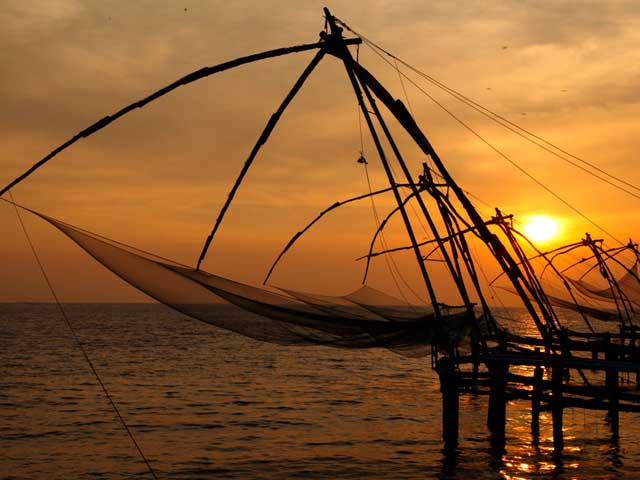 Chinese Fishing Nets & Vasco Da Gama Square: A vivid legacy of one of the earliest people to call on the Malabar Coast, these nets is unmistakable as one enters the harbour.
Chinese Fishing Nets & Vasco Da Gama Square: A vivid legacy of one of the earliest people to call on the Malabar Coast, these nets is unmistakable as one enters the harbour.
Records show that they were first erected between AD 1350 and 1450. Constructed out of Teak wood and Bamboo poles, they work on the principle of balance.
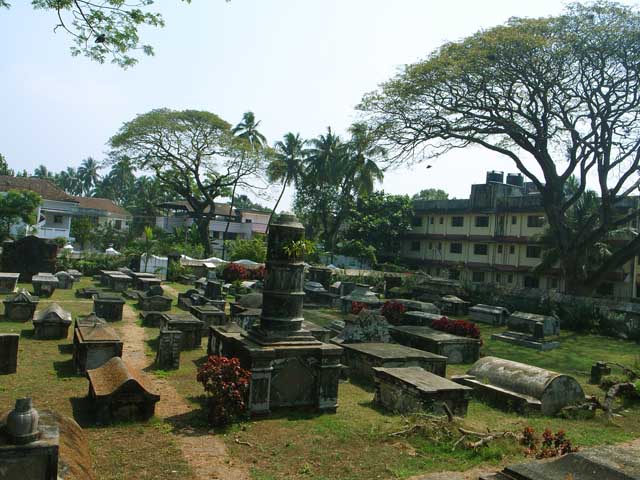 The Dutch Cemetery: It is the oldest European cemetery in India. Consecrated in 1724, the cemetery has 104 tombs. It is now being looked after by St. Francis CSI Church, Fort Cochin.
The Dutch Cemetery: It is the oldest European cemetery in India. Consecrated in 1724, the cemetery has 104 tombs. It is now being looked after by St. Francis CSI Church, Fort Cochin.
Though the cemetery remains closed for most of the day (for fear of anti-social elements entering the place), it is opened on requests made by visitors.
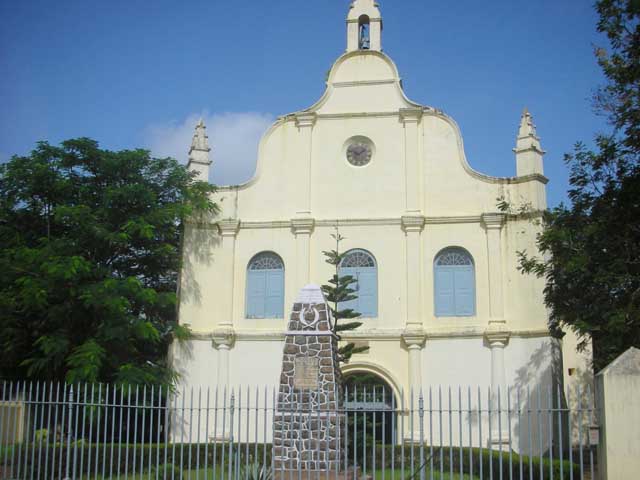 St Francis Church: St. Francis Church was originally named as Santo Antonio. It is the first church to have been built in the new European influenced style and tradition. The original wooden building of 1510 was soon replaced by the present building around 1546.
St Francis Church: St. Francis Church was originally named as Santo Antonio. It is the first church to have been built in the new European influenced style and tradition. The original wooden building of 1510 was soon replaced by the present building around 1546.
Vasco da Gama died here in 1524 and was originally buried in the church, which has the tomb of Vasco-Da-Gama. Fourteen years later his body was removed back to Portugal. The church has an impressive facade. Inside the chancel is separated from the nave by a plain arch.
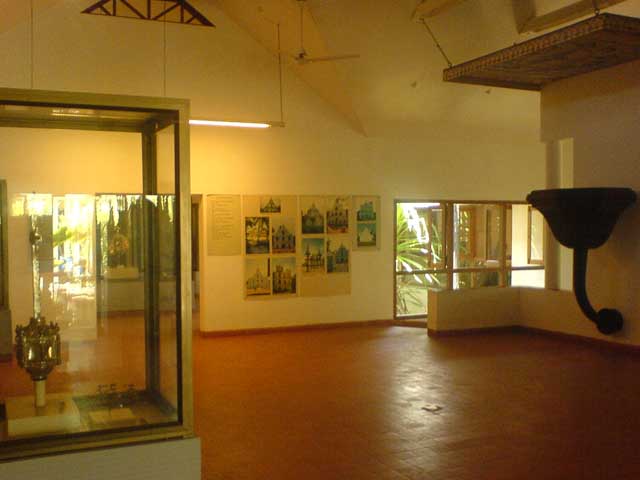 Indo-Portuguese Museum – Bishop’s House: The museum was established by the efforts of the late Dr. Joseph Kureethra, Bishop of Cochin.
Indo-Portuguese Museum – Bishop’s House: The museum was established by the efforts of the late Dr. Joseph Kureethra, Bishop of Cochin.
The Bishop of Cochin Diocese, in a bid to protect and showcase the rich cultural heritage and foreign influence (in this case, the Portuguese influence) established this museum, which now is a single access point to view the Portuguese influences on Fort Cochin and the surrounding areas, especially, the Western Parts of Cochin.
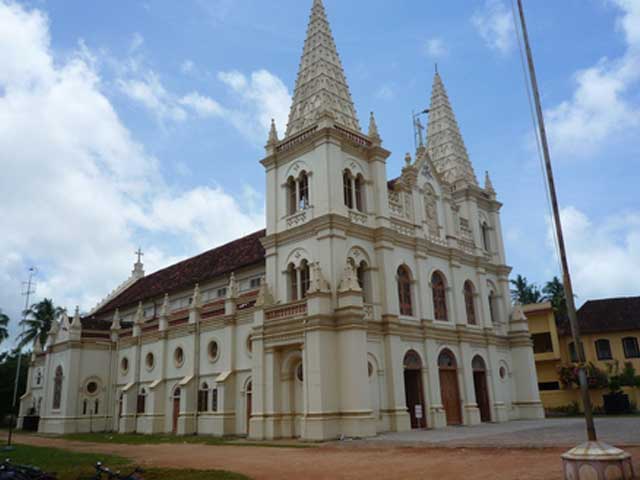 Santa Cruz Basilica: Santa Cruz was used as an armory during the Dutch occupation in the 17th century, and later destroyed by the British in the 18th century.
Santa Cruz Basilica: Santa Cruz was used as an armory during the Dutch occupation in the 17th century, and later destroyed by the British in the 18th century.
The cathedral would not be rebuilt until the beginning of the 20th century. One century later, in 2004, John Paul II raised the status of Santa Cruz to Basilica.
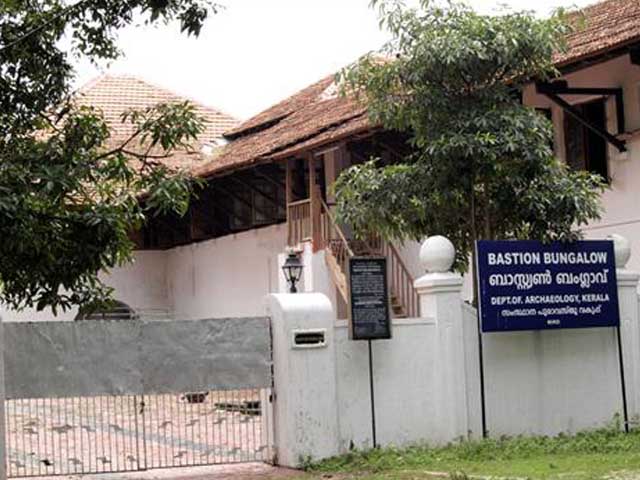 Bastion Bungalow: The Fort Cochin Heritage Development Society held preliminary discussions in this regard at its sitting in December. The estimate for these projects will be prepared at the next meeting of the society. “Apart from beautification of Jew Street, a pay-and-use toilet will be constructed in the area.
Bastion Bungalow: The Fort Cochin Heritage Development Society held preliminary discussions in this regard at its sitting in December. The estimate for these projects will be prepared at the next meeting of the society. “Apart from beautification of Jew Street, a pay-and-use toilet will be constructed in the area.
Another project is aimed at landscaping the walkway near the Thakur Bungalow, for which an estimate of Rs. 22 lakhs has been submitted to the State Government,” said V.A. Aurangazeb, Regional Joint Director of the Tourism Department.
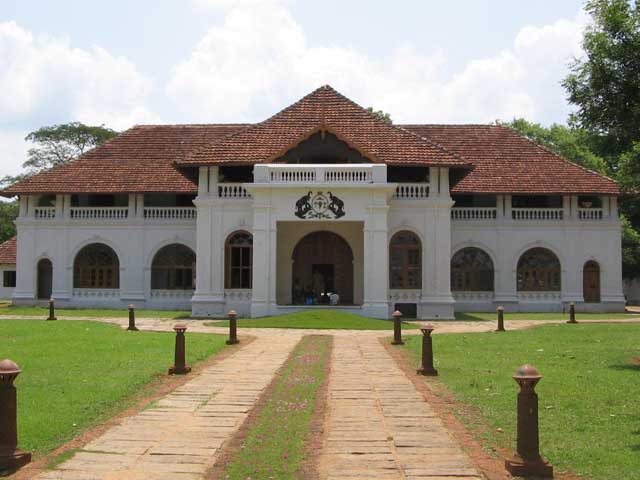 Dutch Palace, Mattancherry: Mattancherry Palace with its medieval charm is situated at Palace Road, Mattancherry, Cochin. It was built by the Portuguese and presented to Veera Kerala Varma (1537-65), Raja of Cochin, in 1555 AD. The Dutch carried out some extensions and renovations in the palace in 1663, and thereafter it was popularly called Dutch Palace. The Rajas also made more improvements to it.
Dutch Palace, Mattancherry: Mattancherry Palace with its medieval charm is situated at Palace Road, Mattancherry, Cochin. It was built by the Portuguese and presented to Veera Kerala Varma (1537-65), Raja of Cochin, in 1555 AD. The Dutch carried out some extensions and renovations in the palace in 1663, and thereafter it was popularly called Dutch Palace. The Rajas also made more improvements to it.
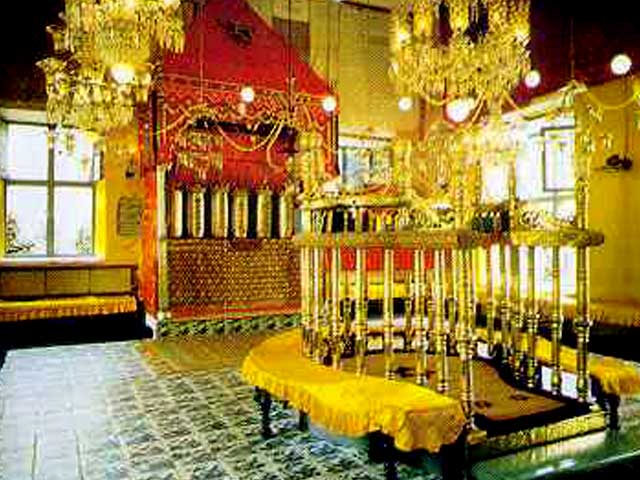 Jewish Synagogue, Mattancherry: The Malabari Jews formed a prosperous trading community of Kerala, and they controlled a major portion of world wide spice trade. In 1568, the Jews of Kerala constructed the Paradesi Synagogue adjacent to Mattancherry Palace, Cochin, now part of the Indian city of Ernakulam, on land given to them by Paraja, the Raja of Cochin.
Jewish Synagogue, Mattancherry: The Malabari Jews formed a prosperous trading community of Kerala, and they controlled a major portion of world wide spice trade. In 1568, the Jews of Kerala constructed the Paradesi Synagogue adjacent to Mattancherry Palace, Cochin, now part of the Indian city of Ernakulam, on land given to them by Paraja, the Raja of Cochin.
The original synagogue was built in the 4th century in Kodungallur (Cranganore) when the Jews had a mercantile role in the South Indian region along the Malabar Coast now called Kerala. It was later moved to Cochin from Kodungallur.
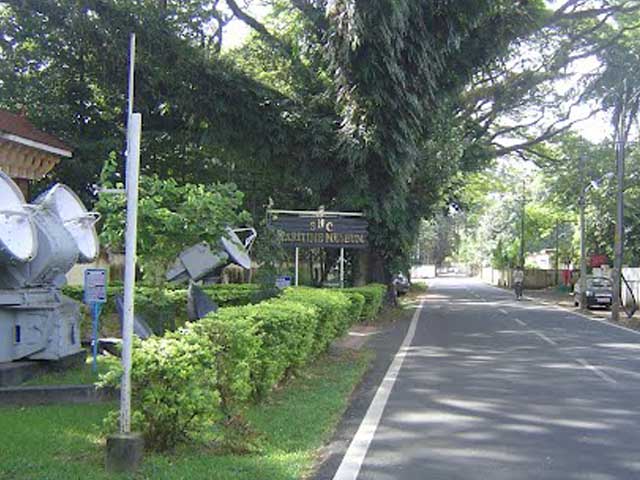 Maritime Museum: Amidst the barbwire topped naval buildings you will find the Maritime Museum. The museum is housed in two war time bunkers (magazines) the British used during the last world war.
Maritime Museum: Amidst the barbwire topped naval buildings you will find the Maritime Museum. The museum is housed in two war time bunkers (magazines) the British used during the last world war.
The first one traces the history of the Kerala’s trading history and the other deals with the Indian Navy dating back to 1612.
The Rain Trees in Fort Cochin: The Raintrees of Fort Cochin. Its Botanical species name is Samanea Saman and its Botanical family name is Fabaceae (Pea family). Its commonly known as Rain Tree. This Central American Rain Tree is a shade tree and is planted throughout the tropics. These rain tree extends from Mexico south to Peru and Brazil. It has been widely introduced to South and Southeast Asia, and the Pacific Islands, including Hawaii. Common names are saman, rain tree and monkeypod. These rain trees in Fort Cochin, their green canopy has been there for generations. They make the place cooler than the rest of the city. There is a tremendous potential to plant even more of these trees in Fort Cochin. The trees have survived the testing of time, thanks mainly to sensitive local people. They have resisted moves by commercial lobbies to chop off trees or their branches. Fort Kochi would be an ideal place to set up a collection of huge indigenous trees, an Arboretum.
The Banyan Tree in Fort Cochin: Banyan tree of Fort Cochin. This tree in Fort Kochi parade ground has been there for as long as one can remember, Ammachi Aalu in the corner of Fort Kochi Post office and St. Francis Church. The Ammachi Aalu, the mother tree in Fort Kochi has an everlasting place in the hearts of the people of Fort Cochin. Rooted in its own strength, it means different things to different people. For the most part its the pride of Fort Kochi.
You could also check out the not so far away Athirampally Waterfalls and Wonderla a good amusement park in outer Kochi.
